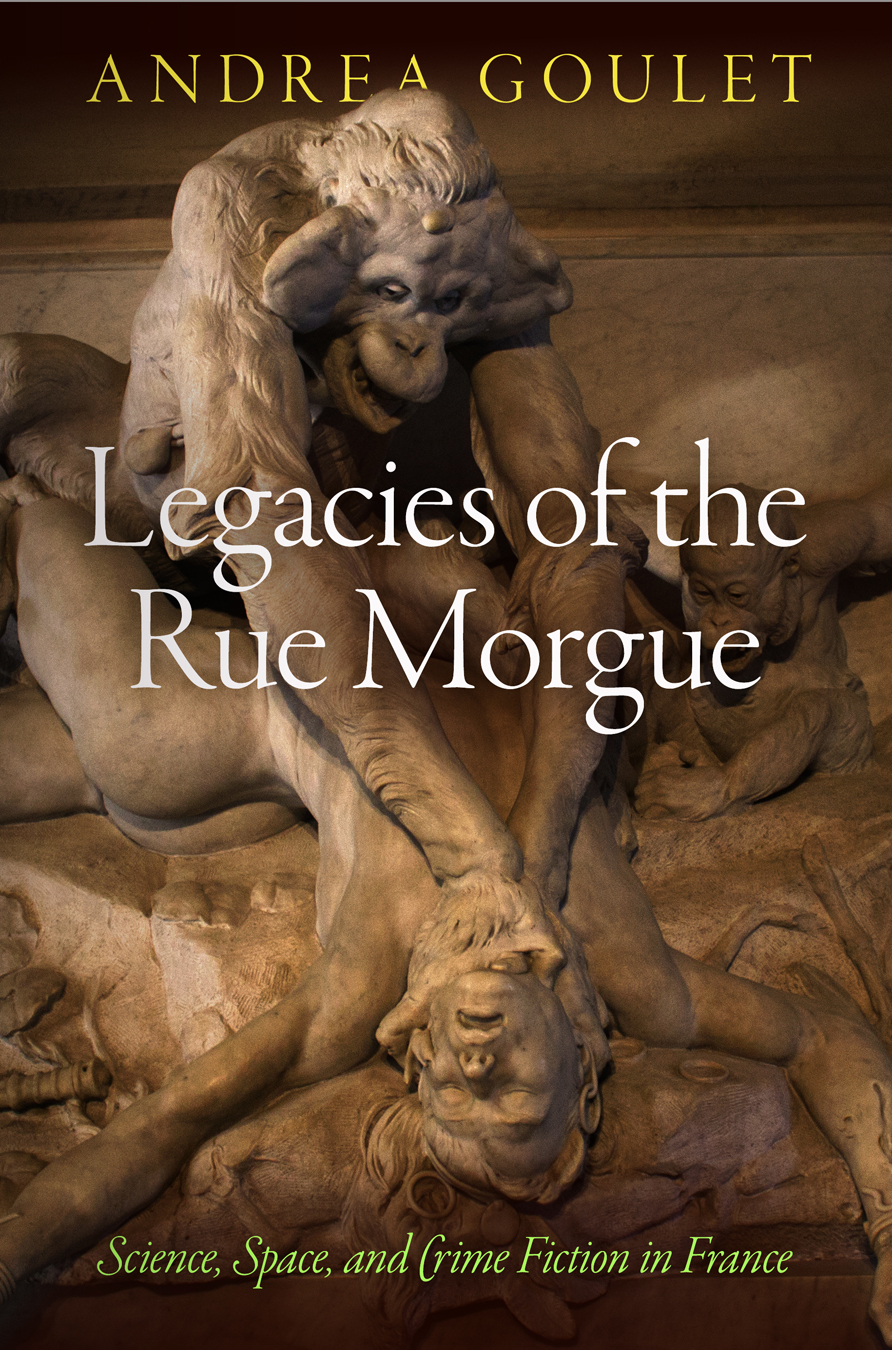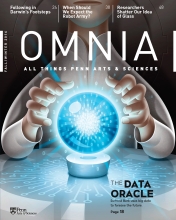A single short story published in 1841 in a Philadelphia-based magazine by a Boston-born writer invented modern French detective fiction. That is but one insight explored in Legacies of the Rue Morgue: Science, Space, and Crime Fiction in France by Andrea Goulet. Edgar Allan Poe’s story, which describes the investigation of a double murder surrounded by strange circumstances, continues to shape the global forms of the crime novel, Goulet says.
But why did Poe—who had not previously visited Paris—choose Paris as the setting for “The Murders in the Rue Morgue,” his genre-defining story? “Poe studied the French language and its literature,” notes Goulet, a professor of Romance languages. “The 19th century saw the rise of mass-circulation newspapers and magazines. And Poe was very aware of the particulars of the popular, sensationalist press in France, which brought the grisly details of domestic crimes to thousands of readers.”
In Legacies, Goulet searches for clues using literary analysis as well as geology, biology, paleontology, archaeology, and cartography. “I’ve always been interested in science in literature,” says Goulet, whose first book was Optiques: The Science of the Eye and the Birth of Modern French Fiction. “Fictional detectives, who are often compared to paleontologists unearthing clues to the past, have an insight that others don’t. They are gifted in rational, science-based deduction but invested in what would seem to be its opposite—the realm of bloody violence that lies below the layers of history.”
Using science as a prism for viewing the specific time and place that gave rise to detective fiction—19th-century Paris—allows Goulet to track popular crime stories from their origins to the 21st century, where the genre still organizes the way we conceive urban space. During the modernization of Paris undertaken by Napoléon III and Georges-Eugène Haussmann between 1853 and 1870, demolitions unearthed fossilized animal and human bones and other remains of millennia of life. “Paleontology and geology were coming to the fore, particularly in Paris,” notes Goulet, who is also an active participant in Penn’s Humanities + Urbanism + Design Initiative (HUD), which brings together faculty and students representing varied humanities and design disciplines to think about cities past, present, and future. “Parisians were fascinated by these discoveries, which revealed a deep and violent national past” that resonated with what Goulet describes as a period of continuous revolutions in France starting in 1789. The history of crime fiction, for Goulet, is fueled by an enduring tension between “political insurrection and domestic drama.”
In the 20th century, a number of detective novels included maps of the fictional scenes of the crime. “Like crime fiction, maps are an attempt to impose rational order on fundamentally violent events and scenes,” says Goulet. “The chaos and trauma of underground crime subverts the rational, ordered, modern city, while conflict aboveground underscores the sociological aspect of crime. And throughout the genre’s modern history—from Poe’s imaginary rue Morgue and Eugène Sue’s serial Mysteries of Paris to today’s Scandinavian crime novels and television shows like The Wire—location continues to matter.”




